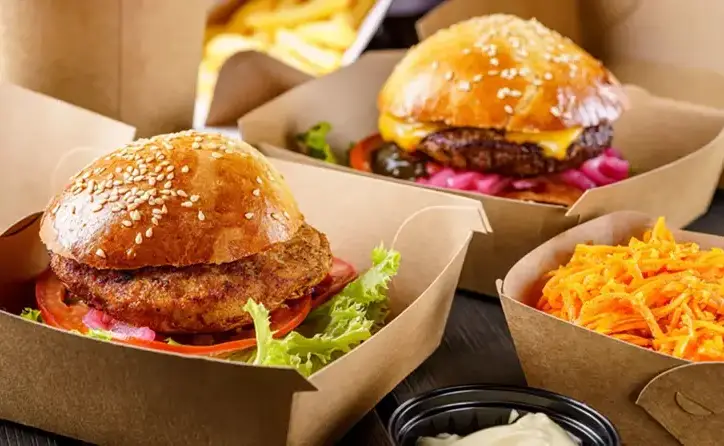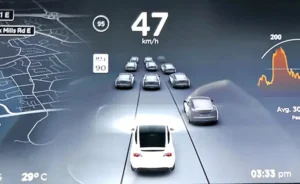California has never been shy about setting trends — from clean cars to climate policy, from Silicon Valley to organic farming. Now, the Golden State is taking another bold step: becoming the first in the nation to ban ultra-processed foods (UPFs) from public school cafeterias.

Governor Gavin Newsom signed the sweeping legislation earlier this month. Starting in 2026, school meals will look very different: out go chicken nuggets, soda, and neon-colored snacks; in come whole grains, fresh produce, and meals without chemical additives.
For some parents, it’s long overdue. For critics, it’s government overreach. For kids? It depends on whether the new food actually tastes good.
What Exactly Counts as “Ultra-Processed”?
Nutritionists use the term ultra-processed foods for products so heavily engineered that they barely resemble their original ingredients.
Think:
- chips, sugary sodas, and energy drinks,
- packaged muffins, cookies, and snack cakes,
- frozen nuggets, hot dogs, and deli meats with preservatives,
- instant soups and sauces with a laundry list of additives.
If the ingredient label reads like a chemistry experiment, it’s almost certainly ultra-processed.
Why Target Schools?
Because schools feed kids — a lot of kids. For millions of California students, breakfast and lunch at school provide up to half of their daily calories.
And the stakes are high. Nationwide, more than one in five children is obese, according to the CDC. In California, one in three school meals contains excess sugar or salt. Children in low-income families are especially vulnerable — they’re 40% more likely to suffer from diet-related diseases.
Changing what’s on the cafeteria tray, lawmakers argue, could reshape health outcomes for an entire generation.
What Will Actually Change?
The new law bans:
- sodas and sweetened drinks,
- foods with artificial dyes or flavorings,
- ultra-processed meats like nuggets and hot dogs,
- packaged sweets and factory-made desserts.
In their place, schools will serve:
- fresh fruit and vegetables,
- whole-grain meals,
- unprocessed meat and fish,
- dairy products without synthetic stabilizers.
So no, it won’t be Michelin-star dining. But it does mean the end of reheated pizza squares and chocolate milk pumped with syrup.
Parents vs. Critics
Parents, especially in urban and suburban districts, are welcoming the change. “Finally, my kid will eat something other than fries,” one Bay Area mom wrote on Facebook. A recent survey found 68% of California parents support the new rules.
But critics are pushing back. The processed food industry says the law will disrupt supply chains, kill jobs, and raise costs. Conservative lawmakers warn it’s another example of Sacramento “telling families how to live.”
As one lobbyist put it bluntly: “You can’t legislate taste.”
The Money Side of the Ban
California school districts spend billions annually on food. Redirecting that money away from big food companies opens the door for:
- local farmers supplying fresh produce,
- small bakeries and co-ops offering minimally processed goods,
- food-tech startups creating healthier versions of cafeteria classics.
In other words, this isn’t just a health initiative — it’s potentially an economic reshuffle.
Will Kids Actually Benefit?
Research suggests yes. Cutting down on UPFs has been linked to better focus, improved memory, and even lower anxiety levels in children.
In pilot programs in Los Angeles and Sacramento, schools that introduced “clean menus” saw students with more energy and sharper concentration. Teachers reported fewer sugar crashes and more engagement in class.
It’s not just about physical health. It’s about giving kids a better shot at learning.
Could This Spread Beyond California?
If history is any guide, absolutely. California’s car emissions standards eventually shaped national policy. Its organic food movement went global.
Already, states like Massachusetts and New York are floating similar ideas. Within a decade, banning UPFs in schools could move from California’s experiment to America’s norm.
What Do Students Think?
Teenagers aren’t exactly cheering — but they’re not rioting either. In interviews, many said they were fine with the changes:
- “I’d drink a smoothie instead of soda.”
- “As long as it doesn’t taste like cardboard, I’m cool with it.”
This might be the biggest shift of all: if kids grow up on avocado toast instead of Big Macs, their “normal” will look very different from their parents’.
California’s Identity, Once Again
Beyond the cafeteria, this ban is about California’s brand. The state once again positions itself as the place willing to go first — to push further, risk backlash, and set a national precedent.
Love it or hate it, this is how California sees itself: the laboratory of the future.
The Bigger Question
The UPF ban is bold. It will affect millions of families, billions of dollars, and decades of food habits. But if it works, it could mean healthier kids, stronger learning, and longer lives.
The question now is whether California can pull it off — and whether the rest of America will follow.
👉 So what do you think: should schools decide what kids eat, or should that be up to families? This debate is about more than food — it’s about the future of California’s children.

















